How One LA-Area High School is Changing the Way We Teach Photography
![]()
Nestled in the heart of a youthful neighborhood arts district, just opposite the bustling Port of Los Angeles, lies a relatively unassuming gallery, much like any of those that surround it.
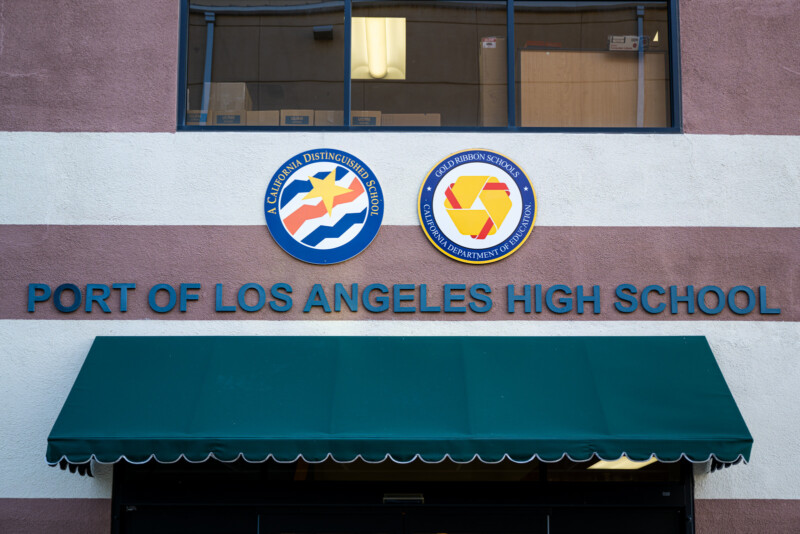
The Port of Los Angeles High School (POLAHS), located smack in the middle of San Pedro, is unique among schools in the Los Angeles area. Established as a tuition-free charter school in 2000, it’s now home to approximately 1,000 students and has a very low student-to-staff ratio for the area of about 15:1.
Among its myriad advanced courses and ample scholarship opportunities, the school also offers a variety of Career Technical Education (CTE) pathways, including everything from construction to boat operation-hey, it’s right next to the port, what did you expect? Of particular interest to this journalist though, and probably you as well, is its groundbreaking approach to digital photography education.
The Digital Photography program at POLAHS is split into 3 classes of almost 90 students. Over 2 years of study, students are taught the history of the medium, how to work efficiently, and, of course, a wide variety of photographic techniques. They’re even tasked with completing the Adobe Certified Associate course, which involves intensive study and mastery of Photoshop and Lightroom, and gives each student an official endorsement for their resume.
Aside from their classroom education, students are supplied with everything they need to create amazing art pieces thanks to the school’s partnership with Nikon Education. Currently, the cabinets in the photography room are brimming with many copies of just about every Nikon lens you can imagine, from kit standbys like the 24-70mm f/4 S to professional-grade equipment like the 70-200mm f/2.8 VR S – I even saw a flight case for an F-mount 500mm f/4 prime. These are mated to a fleet of Z6IIs, and a recent addition of a handful of Z8s for special projects.
If that weren’t enough, thanks to the generosity of donors, industry partners, and investment from the school itself, students are afforded the opportunity to participate in photo field trips to places like the sidelines of Dignity Health Sports Park, home of the LA Galaxy, and even adventures abroad to a choice of destinations like Japan, the Galapagos Islands, and Namibia, with who else but National Geographic.
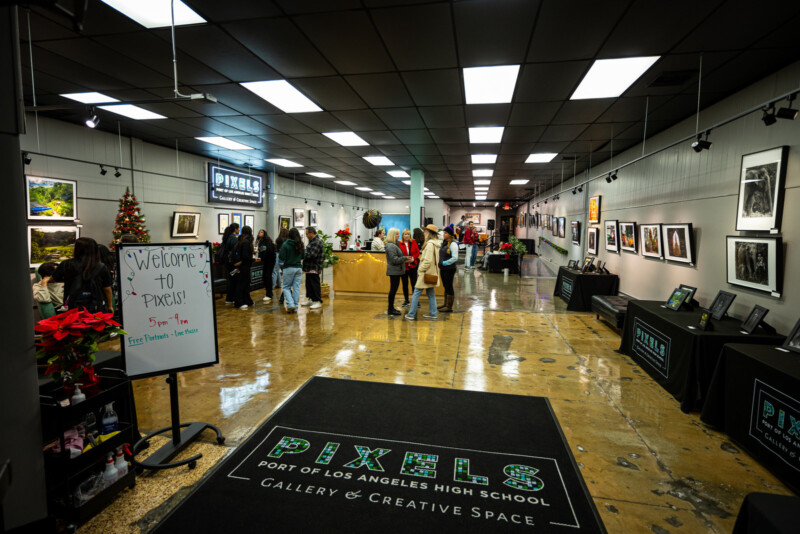
All of this culminates with the students finalizing their work and putting it up for display in the Pixels Gallery, where it can be purchased, with all funds going directly to the photographer who created it.
Occupying the former site of famed seascape oil painter Violet Parkhurst’s main West Coast gallery, and situated just 2 blocks from the school itself, the Pixels gallery serves not only as a place to display students’ work for sale but also as a popular hangout spot during the First Thursday Art Walk, a San Pedro institution. Visitors are welcome to browse the gallery, listen to frequent live music, have souvenir portraits taken, and chow down on some complimentary bites to eat.
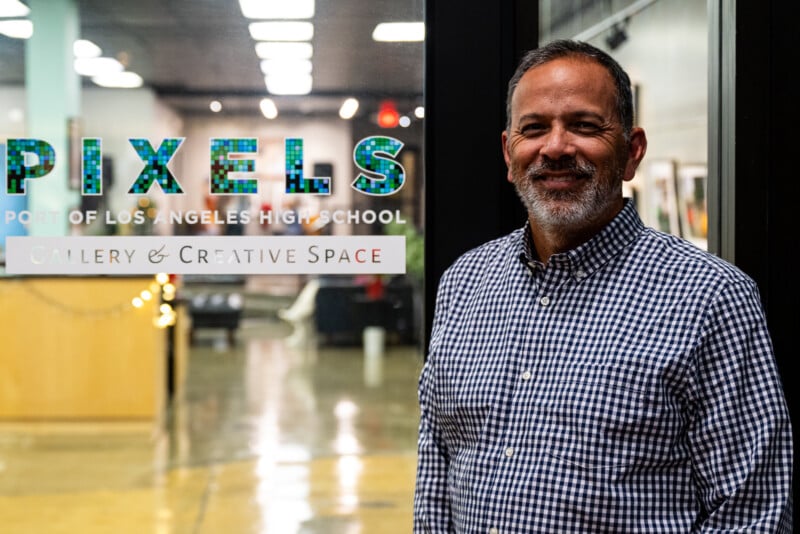
Photography teacher Erick Miseroy explains that the program is designed not only to provide a creative outlet for students but also to set them up for success in other areas of their lives. “Students need a spark- something to keep them motivated for school and success. Kids want to feel special, and creating images and having the ability to defend their work creates a level of self-confidence that otherwise wouldn’t happen.”
And it seems to be working. During my visit, I was fortunate enough to speak with Elizabeth Ozaeta, a senior at POLAHS who had been selected for a trip to Thailand and whose work was on display at Pixels.
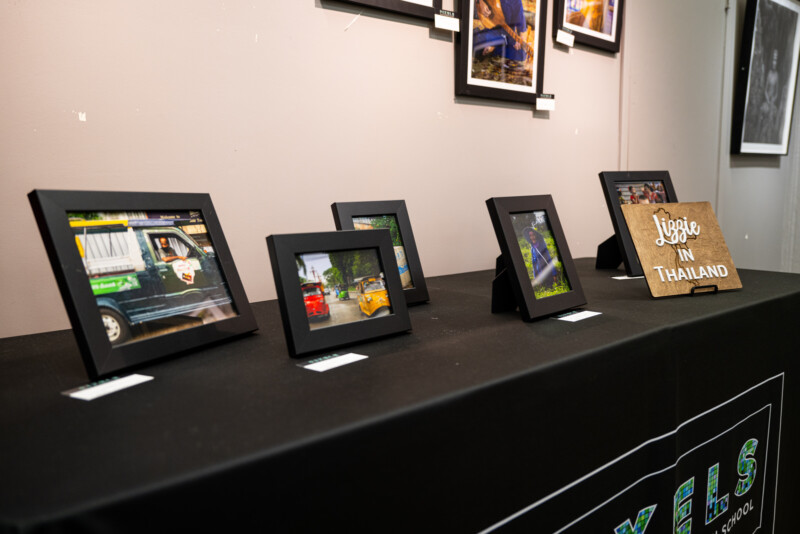
After going through the selection process, which involves writing a short personal statement, assembling a small selection of photos to highlight their photographic style and personality, and an in-person interview, she chose to visit Thailand because it was the destination she was most unfamiliar with. “One of the things I mentioned [in the selection process] was how I wanted to introduce my community to Thai culture. I wasn’t really familiar with Thai culture myself, and so I thought that bringing [back] these smaller stories can have a huge impact on a community like this”, she says. Recounting her trip to Thailand, Elizabeth tells me that she was actually embedded with a group of anthropology students, giving her an excellent opportunity to document and bring back pieces of Thai culture to her community in San Pedro.
Among the dozens of photos of Buddhist temples, roads lined with Tuk-Tuks, and lush greenery, she points out two in particular that stood out to her as favorites. One, a portrait of a woman from a community of Karen tribespeople in the north of Thailand, and another, a photo of a family of elephants living in a sanctuary.
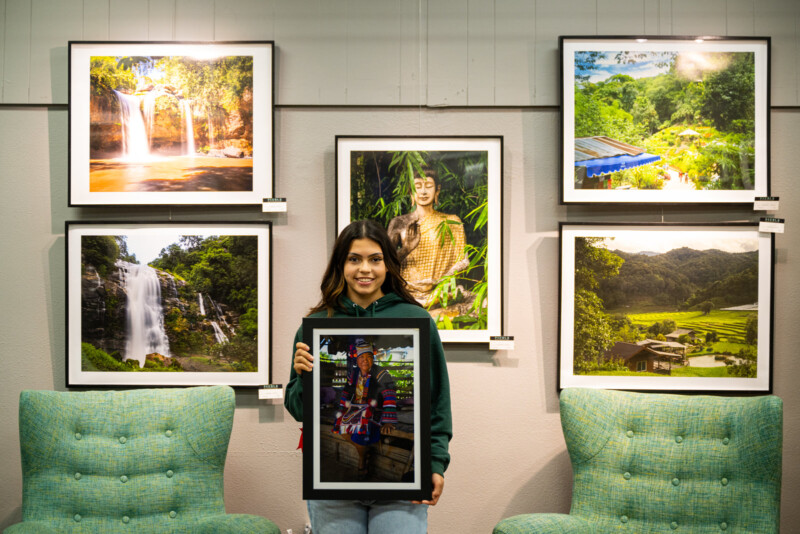
I could tell that hearing the story behind the former meant a great deal to Elizabeth, who explains that the groups of Karen peoples are often displaced as a result of armed conflict in the region, and those that migrated from Myanmar to Thailand derive much of their livelihood from tourism and the sale of handmade goods like traditional clothing and household products. As you can imagine, they were profoundly affected by the COVID-19 pandemic, and Elizabeth’s excursion group was among the first foreign visitors after the worst of the outbreak had passed. She was struck by how integral family and community were to everyone she met, and vividly remembers that though their knowledge of English was limited and much of their interaction was aided by an interpreter, the elderly woman depicted in the portrait repeatedly pointed at a young child nearby and referred to them as “baby”.

As for the latter, the group visited the Kindred Spirit Elephant Sanctuary to live and learn among a herd of Asian elephants. Unfortunately, many of these animals had been exploited in the logging and tourism industries, with several being subjects of abusive confinement at the hands of their previous owners. Thankfully, they were given a new lease on life, and Elizabeth was lucky enough to encounter Junior, the first elephant born in the sanctuary itself, along with his family. She was particularly inspired by the mahouts, or caretakers, who dedicate their entire lives to the care and keeping of their elephants, saying “I’ve never really been that close to an elephant…but being able to have that deeper story, and connecting with these elephants by knowing their name, their history, and about all of these people that care for them…it’s really eye-opening.”
Hearing her tell it, having access to such a program is an invaluable resource not only for herself but for other students. “One of the awesome things about Pixels is that it allows students to display their artwork in a space where it’s comfortable. It’s a way for them to express themselves and show their community what they see, through their eyes. Not all students are able to express themselves in more exterior spaces – having a place like this is really important for them to be able to progress and succeed.”
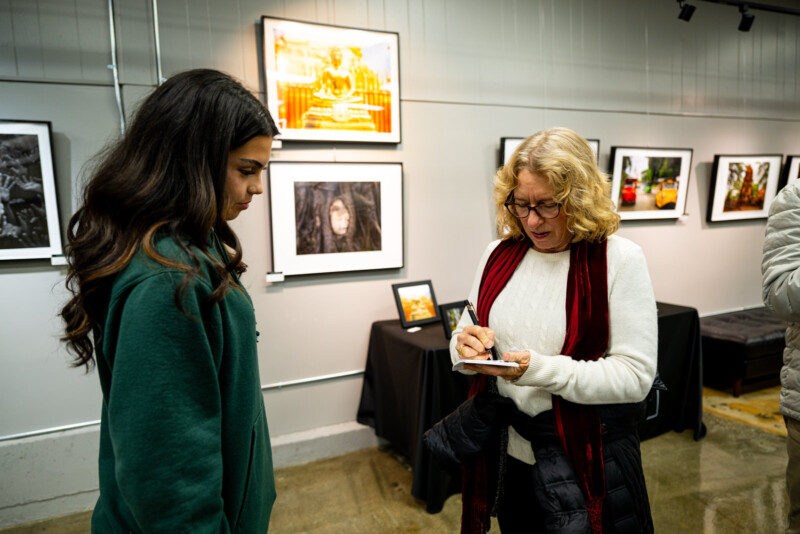
As if to put an exclamation point on her words, a gallery visitor purchased one of her pieces just moments after they left her mouth.
With every new thing I learned about the photography program at POLAHS, I was, of course, thrilled. At the same time though, I couldn’t help but feel that it was, unfortunately, a perfect juxtaposition of the experiences and resources many students have (or rather, don’t have) access to. Whether this is an issue of a systemic lack of funding for STEAM education in many schools around the US or simply that there aren’t enough people sufficiently invested to make it work, I am nevertheless grateful for those who do get to have these once-in-a-lifetime chances to teach us as much as we try to teach them.

Thankfully, the school administration at POLAHS seems to be fully invested in the future of the photography program and the Pixels gallery. Interim Principal Tim Dikdan tells me that the gallery holds profound importance, not only for the students participating in the photography program but for the school and the greater San Pedro area as well. ”Serving as a showcase for the artistic endeavors of the school’s budding photographers, the gallery not only amplifies the talents and achievements of the students but also cultivates a sense of pride and accomplishment within the entire school community…Through the lens of the photography gallery, the school community witnesses the transformative power of artistic expression, serving as a source of inspiration and a testament to the boundless potential residing within each student.”
Sounds like quite a ringing endorsement to me.
Image credits: Photographs by John Bilbao